Engaging the Community in Local Archaeology through a Friends Group
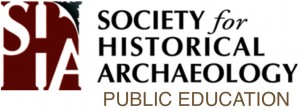 Since 1997 I have been a member of the Friends of the Office of State Archaeology (FOSA) in Connecticut. I actually found out about the group on a flyer posted in an elementary school where my mom worked. I was in high school at the time. I knew I would be an archaeologist since I was a kid, and through high school and college I was a member of my local archaeological groups, including FOSA. Upon entering graduate school and having worked in cultural resource management for a few years I took to heart the growing movement of the need for more public involvement and outreach in archaeology. I dove head first into working with FOSA, and am currently the Vice President, Volunteer Coordinator, and I serve on the Newsletter and Archaeology Awareness Month Committees. I have found that a Friends group can be a great public benefit and can make substantive contributions to archaeological research.
Since 1997 I have been a member of the Friends of the Office of State Archaeology (FOSA) in Connecticut. I actually found out about the group on a flyer posted in an elementary school where my mom worked. I was in high school at the time. I knew I would be an archaeologist since I was a kid, and through high school and college I was a member of my local archaeological groups, including FOSA. Upon entering graduate school and having worked in cultural resource management for a few years I took to heart the growing movement of the need for more public involvement and outreach in archaeology. I dove head first into working with FOSA, and am currently the Vice President, Volunteer Coordinator, and I serve on the Newsletter and Archaeology Awareness Month Committees. I have found that a Friends group can be a great public benefit and can make substantive contributions to archaeological research.
The Connecticut Office of State Archaeology (OSA) has only one position, the State Archaeologist, who has no additional staff. In Connecticut the State Archaeologist is a position within the Connecticut State Museum of Natural History/Connecticut Archaeology Center at the University of Connecticut. State legislation in 1987 charged the State Archaeologist with identifying, managing, and preserving Connecticut’s archaeological resources. This is a position outside the state and federal compliance responsibilities of the State Historic Preservation Office. The State Archaeologist reviews municipal and privately funded development projects and makes recommendations that encourage the preservation of archaeological resources. The State Archaeologist is the public face of Connecticut archaeology. Talks are given throughout the state on a variety of topics to a diversity of audiences.
FOSA was established to support and assist the work of the Office of State Archaeology. Connecticut may be a small state, but it’s hard for the State Archaeologist to cover the entire state when there are projects going on and public outreach to do. The group was founded by individuals who had championed the establishment of the OSA, and who realized the OSA would still benefit from their support.
When preservation of an archaeological site is not an option in the face of development the State Archaeologist must rely on volunteer labor to complete archaeological investigations on private and town lands (with permission from the land owners). FOSA has a committee of experienced volunteers, some of them professional archaeologists by trade or training, who organize the dig, set up the grid, and maintain the site paperwork. The Volunteer Coordinator sends excavation announcements to the dig volunteers who then work on the site as available. There are several digs a year, and this season there has been at least one day of fieldwork per week.
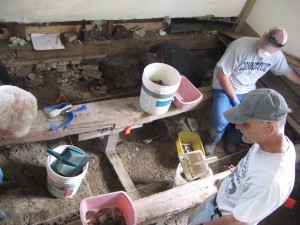
Nick Bellantoni and FOSA Volunteers at the Strong-Howard House excavation in Windsor, 2013
Photo by FOSA
When a site excavation is complete artifacts and paperwork are returned to the OSA Lab where volunteers spend the fall through spring washing, identifying, and cataloging artifacts. This past year the lab was often at capacity, and a great deal of work was completed.
FOSA not only assists the State Archaeologist with excavation and laboratory work, but also has a very active Outreach Committee that attends fairs, festivals, farmers markets, and talks. Displays on the latest OSA work share new information about local archaeology and history with the public. Artifacts are displayed for the public to handle. Knowledgeable volunteers are on-hand to answer questions and tell people where to find more information and even how to join in the fun! FOSA has sponsored and co-sponsored public events, the largest of which is the Archaeology Fair in October (CT Archaeology Awareness Month). FOSA has an Annual Meeting that is consistently well attended by the public and has brought speakers such as James Adovasio, Douglas Owsley, and Stephen Houston to Connecticut.
Currently FOSA has over 200 members who pay annual dues to support the OSA and FOSA. FOSA has most recently donated funds to the University of Connecticut for the hire of a temporary assistant for the State Archaeologist to manage and organize the state’s archaeological site files with the goal of digitizing them and making them more accessible to researchers and professionals. FOSA also pays for the State Archaeologist’s mobile phone, as work often takes place outside the office.
FOSA provides opportunities for the public to be involved in archaeology in many different capacities even if they’re unable to dig themselves. Volunteers maintain the OSA library, and FOSA has a semiannual newsletter with member contributed articles which is edited by a Newsletter Committee. FOSA has volunteers who maintain our group’s general housekeeping like membership, nominations, and the website. Members can choose their level of activity in the group, and in the last two years we have noticed a great increase in our volunteer hours. FOSA volunteers are recognized for their hard work and have been requested on excavations for other organizations including the Joshua’s Trust, the Mashantucket Pequot Museum and Research Center, and Wesleyan University.
FOSA provides not only the support for the work of the State Archaeologist and a way to raise awareness of archaeology, but it also provides its members with a community for like-minded people. The social benefits of working together for a cause are immeasurable, and personally I have built strong friendships with many fellow volunteers. FOSA also provides a forum for professionals, students, retirees, and other members of the public to share their passion for archaeology.
It has been my experience that with a group of devoted and enthusiastic people we can raise awareness of archaeology to more people with a stronger voice. The public is looking for ways to be involved in archaeology. What I would like you all to consider is how can you organize interested members in the public to support an archaeology cause? Could a Friends group help you preserve, protect, or explore an archaeological resource that’s important to you and your community?
Historical Archaeology, the NSF, and Why Archaeology Matters
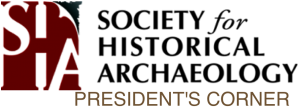 As many of you know, last week the SHA responded to Eric Cantor and Lamar Smith’s USA Today letter advocating NSF funding regulations. There was a rush of tweets on the issue, many tagged #WhyArchMatters; SHA’s social media sounded our collective anxieties; and a host of bloggers including the SHA Blog, AAA Archaeology Division President Rosemary Joyce, and the Society for American Archaeology echoed many of our collective concerns about the ways archaeology is being characterized in these public discussions.
As many of you know, last week the SHA responded to Eric Cantor and Lamar Smith’s USA Today letter advocating NSF funding regulations. There was a rush of tweets on the issue, many tagged #WhyArchMatters; SHA’s social media sounded our collective anxieties; and a host of bloggers including the SHA Blog, AAA Archaeology Division President Rosemary Joyce, and the Society for American Archaeology echoed many of our collective concerns about the ways archaeology is being characterized in these public discussions.
The issue of NSF funding is certain to re-emerge with the end of the government shutdown, and it raises bigger questions about how we articulate the value of historical archaeology beyond our scholarly circles. The SHA needs your help on both counts documenting the value of NSF-funded historical archaeology research. We want to underscore specific social and economic values of historical archaeology that need to be articulated to members of Congress and the general public.
Today a form is posted on the SHA Blog that asks you to provide us some specific examples of the value of NSF-funded historical archaeological research. The form asks for
- a description of your project;
- a description of the specific thing your project taught us about the past; and
- how your project directly benefited your career, your institution, and most importantly, the community or communities associated with your project – socially and economically.
Instead of providing talking points to legislators and people who are interested in archaeology, we would prefer to provide them concrete examples of the benefits of what historical archaeologists do, especially with the taxpayers’ money. If we do not make stronger cases for all the ways historical archaeology shapes communities financially and socially we risk having others misrepresent the discipline.
We will have a Saturday lunchtime session at the January SHA Conference that will identify an action plan for engaging the US Congress and the public on why archaeology matters and the importance of NSF and other federal funding. I will report back on that on the SHA Blog in the next couple of weeks, but I certainly hope all of you who can make it to the meeting will join us.
These are simply first steps toward effectively sharing our scholarship beyond historical archaeology circles. Some of this communication needs to be with legislators and their staffs, many of whom have never met a historical archaeologist and simply need to know what we do. Some of this discussion also needs to be for our public constituents who support heritage preservation and are interested in sharing the research their taxes made possible. The SHA has been firmly committed to public archaeology for much of the past half-century, so we have laid a solid foundation.
Workshops at Quebec City, Part 3
This year’s confer ence has a large slate of workshops; something to answer any interest. In preparation for the conference, and to inspire your interest in coming and participating, the Academic and Professional Training Committee offers three posts introducing these workshops. This is the second of those three postings.
ence has a large slate of workshops; something to answer any interest. In preparation for the conference, and to inspire your interest in coming and participating, the Academic and Professional Training Committee offers three posts introducing these workshops. This is the second of those three postings.
We hope you find something here that piques your interest, and we hope to see you in Quebec City!
Workshop 9: An Introduction to Cultural Property Protection of Historical and Post-Medieval Archaeological Sites during Military Operations
Hosted by Christopher McDaid and Duane Quates
Sites of interest to SHA members, which frequently deal with the expansion of global capitalism, the expansion of the European powers, or the forced relocation of people, are not the kinds of sites that routinely appear on the World Heritage list, and often do not receive official heritage recognition. This workshop introduces the international framework for cultural property protection during military operations, and the ways in which recent sites challenge the system. Attendees will receive an overview of militaries’ heritage management programs, the international framework for cultural property protection, how scholars can communicate information to military planners effectively, and gives reviews of several case studies involving military operations and cultural property protection.
Workshop 10: Oral History
Hosted by Edward Gonzalez-Tennant
The recording of personal histories is increasingly viewed by researchers and members of the public as a vital source of information regarding the past. Everyone has a story to tell and oral history recognizes the importance of personal experiences in understanding our shared past. Historical archaeology has a long history of valuing personal testimony. Oral histories strengthen archaeological interpretations by speaking directly to issues of memory, identity, and sharing power. This workshop will introduce participants to standard methods of oral history. The workshop will begin with a discussion of interviewing techniques. We will provide pointers for collecting personal stories, and discuss the use of digital recorders in oral history. Then, an overview of the transcription process is briefly presented. The final hour will be reserved for the collection of oral history interviews.
Workshop 11: Documentary Filmmaking for Archaeologists
Hosted by Joseph W. Zarzynski and Peter J. Pepe
The documentary is an unequalled storytelling vehicle. Advances in digital media and documentary filmmaking make it possible for archaeologists to collaborate with video production companies to create quality documentaries on a micro-budget. The workshop, taught by award-winning documentarians, will guide participants through the documentary filmmaking process. Learn about research, scriptwriting, pitching a proposal, funding, interview techniques, acquiring and storing images, animation, legal issues, video technology, editing, selecting music, film festivals, markets, distribution, and promotion. Whether your goal is to create a television feature, a DVD or VOD to sell, a video for museum exhibit, or just for Internet viewing, an understanding of “doc” filmmaking is required.
Workshop 12: Archaeological Illustration
Hosted by Jack Scott
Want your pen-and-ink drawings to look like the good ones? Pen and ink is all basically a matter of skill and technique which can be easily taught, and the results can be done faster, cheaper, and are considerably more attractive than the black-and-white illustrations done on computer. Workshop participants will learn about materials and techniques, page design and layout, maps, lettering, scientific illustration conventions, problems posed by different kinds of artifacts, working size, reproduction concerns, ethics, and dealing with authors and publishers. A reading list and pen and paper (tracing vellum) will be provided, but feel free to bring your own pens, tools, books and, of course, questions. Be ready to work!
If you have an idea for a workshop to be held at a later conference, or if you would like to organize one yourself, please contact Carl Drexler at cdrexler@uark.edu.
Response to Eric Cantor and Lamar Smith
 Many of you know that Representatives Eric Cantor (R-Virginia) and Lamar Smith (R-Texas) last week published a piece in USA Today advocating tighter controls of National Science Foundation funding. Their piece seized on several archaeological research projects as symptomatic examples of ill-conceived scientific research priorities. Representatives Cantor and Smith did not single out historical archaeology, but their aim is squarely on social sciences, and many historical archaeologists have been fortunate to receive NSF support. NSF funding has significantly impacted the discipline, transformed many scholars’ careers, and supported many archaeological projects benefitting communities throughout the country.
Many of you know that Representatives Eric Cantor (R-Virginia) and Lamar Smith (R-Texas) last week published a piece in USA Today advocating tighter controls of National Science Foundation funding. Their piece seized on several archaeological research projects as symptomatic examples of ill-conceived scientific research priorities. Representatives Cantor and Smith did not single out historical archaeology, but their aim is squarely on social sciences, and many historical archaeologists have been fortunate to receive NSF support. NSF funding has significantly impacted the discipline, transformed many scholars’ careers, and supported many archaeological projects benefitting communities throughout the country.
Today the SHA has written Cantor and Smith responding to their piece in USA Today. Cantor and Smith’s piece is perhaps a rhetorical assault on social sciences, but some legislators are intent on radically changing the NSF in particular, if not all federal funding of the sciences. The potential for such changes at the highest levels of federal funding could have dramatic effects on historical archaeology.
Workshops at Quebec City, Part 2
 This year’s conference has a large slate of workshops; something to answer any interest. In preparation for the conference, and to inspire your interest in coming and participating, the Academic and Professional Training Committee offers three posts introducing these workshops. This is the second of those three postings.
This year’s conference has a large slate of workshops; something to answer any interest. In preparation for the conference, and to inspire your interest in coming and participating, the Academic and Professional Training Committee offers three posts introducing these workshops. This is the second of those three postings.
We hope you find something here that piques your interest, and we hope to see you in Quebec City!
Workshop 5: Practical Aspects of Bioarchaeology and Human Skeletal Analysis
Hosted by Thomas A. Crist and Kimberly A. Morrell
This workshop will introduce participants to the practical aspects of detecting, excavating, storing, and analyzing human remains from historic-period graves. It also will address the appropriate role of the historical archaeologist in forensic investigations and mass fatality incidents. Using historical coffins, hardware, and actual human remains, this interactive workshop is led by a forensic anthropologist and an archaeologist who collectively have excavated and analyzed more than 2,000 burials. Among the topics that will be covered are the most effective methods for locating historical graves; correct field techniques and in situ documentation; the effects of taphonomic processes; appropriate health and safety planning; and fostering descendant community involvement and public outreach efforts. Participants also will learn about the basic analytical techniques that forensic anthropologists use to determine demographic profiles and recognize pathologic lesions and evidence of trauma. No previous experience with human skeletal remains is required to participate in, and benefit from, this workshop.
Workshop 6: Principles of Provenience Control and Underwater Hand Mapping in Underwater Archaeological Excavations
Hosted by Peter J.A. Waddell and R. James Ringer
In a world where technology plays an ever increasing role in the recording process of underwater excavation, it is sometimes easy to forget the importance to control fundamental techniques of provenience control and hand mapping and recording underwater. The objective of this work shop is to provide participants with a walk through the principles and techniques used to establish a provenience system for an excavation and to develop a grid system and a complementary recording method. During this very practical workshop, the participants will see the establishment of a real aluminum grid system in the classroom, learning step by step the details that make a difference. The system used will be based on the grid system developed during the Red Bay excavations and still used by Parks Canada today. The hosts both worked for Parks Canada throughout their careers and were part of the entire excavation of the Basque whaling ships in Red Bay, Labrador.
Workshop 7: Excavating the Image: The MUA Photoshop Workshop
Hosted by T. Kurt Knoerl
This Photoshop workshop covers basic photo processing techniques useful to historians and archaeologists. We will cover correcting basic problems in photos taken underwater and on land, restoring detail to historic images, and preparation of images for publications. We will also cover the recovery of data from microfilm images such as hand written letters. No previous Photoshop experience is needed but you must bring your own laptop with Photoshop already installed on it (version 7 or newer). While images used for the workshop are provided by me, feel free to bring an image you’re interested in working on. Warning…restoring historic images can be addictive!
Workshop 8: Underwater Cultural Heritage Resources Awareness Workshop
Hosted by the Advisory Council for Underwater Archaeology
Cultural resource managers, land managers, and archaeologists are often tasked with managing and reviewing assessments for underwater cultural heritage (UCH) resources. This workshop is designed to introduce issues specific to underwater archaeology and assist non-specialists in recognizing the potential for UCH resources, budgeting for underwater investigations, reviewing UCH-related assessments, and making informed decisions regarding UCH resources. Participants will learn about different types of UCH resources and the techniques used in Phase I and II equivalent surveys. This workshop will introduce different investigative techniques, international Best Practices, and existing legislation. Full-day (interactive lectures, demonstrations); Presentation notes and other materials provided.
If you have an idea for a workshop to be held at a later conference, or if you would like to organize one yourself, please contact Carl Drexler at cdrexler@uark.edu.
Archaeological Personalities and the Profession’s Future
 We live in a moment in which the profession of historical archaeology seems characterized by an odd divide. On the one hand, material things and archaeology are staples of popular culture: a vast range of people seem to be enchanted by material things and everyday histories, and nearly all of us can tell stories of communities and students whose lives have been shaped by historical archaeology in modest and consequential ways alike. On the other hand, though, the discipline is under fire in the face of a withering economy, a government shutdown, a wave of political critics, and a steady flow of well-trained archaeologists growing desperate for employment. The very things we and many of our constituencies are so interested in may be simultaneously receiving their professional death rites.
We live in a moment in which the profession of historical archaeology seems characterized by an odd divide. On the one hand, material things and archaeology are staples of popular culture: a vast range of people seem to be enchanted by material things and everyday histories, and nearly all of us can tell stories of communities and students whose lives have been shaped by historical archaeology in modest and consequential ways alike. On the other hand, though, the discipline is under fire in the face of a withering economy, a government shutdown, a wave of political critics, and a steady flow of well-trained archaeologists growing desperate for employment. The very things we and many of our constituencies are so interested in may be simultaneously receiving their professional death rites.
Perhaps an “archaeological personality” of sorts is emerging outside our modest scholarly circles; that is, the things historical archaeologists value are fascinating (if not important) to many people: the allure of material culture, the compelling stories of everyday people, and the importance of community heritage all seem to find receptive constituencies. Yet at the same moment the profession in its present form is radically transforming. CRM firms are forced to manage modest budgets while they treat employees fairly; museums and preservation organizations have been gutted; politicians routinely criticize anthropology and archaeology; and even insulated university faculty are soberly advising students about the future of archaeological employment both within and outside the walls of the academy. Just as we seem to be turning everybody into an archaeologist, the profession of scholars doing archaeology for a wage seems under risk.
We may need point no further than the television set to confirm that an archaeological engagement with things and everyday heritage has captured public imagination. That broadly defined archaeological personality is reflected in forms that are sometimes clumsy, shallow, or unethical. For instance, Antiques Roadshow, Storage Wars, and American Pickers are among a host of shows that revolve around pillaging things from attics and storage sheds; a wave of genealogy series illuminate our mass quest for heritage harbored in the lives of anonymous ancestors; cable is littered with alien fantasies and concocted historical mysteries revisiting the builders of the pyramids or Stonehenge; and a wave of metal detecting shows has staked a populist claim on archaeological resources. (more…)
Workshops in Quebec City, Part I
 This year’s conference has a large slate of workshops; something to answer any interest. In preparation for the conference, and to inspire your interest in coming and participating, the Academic and Professional Training Committee offers three posts introducing these workshops. This is the first of those three postings.
This year’s conference has a large slate of workshops; something to answer any interest. In preparation for the conference, and to inspire your interest in coming and participating, the Academic and Professional Training Committee offers three posts introducing these workshops. This is the first of those three postings.
We hope you find something here that piques your interest, and we hope to see you in Quebec City!
Workshop 1: Analyzing Glass Beads: When Archaeology and History Meet Archaeology
Hosted by Karlis Karklins, Jean-Francois Moreau, Adelphine Bonneau, and Ron Hancock
The aim of this workshop is to offer a large spectrum of key concepts on glass beads studies from different points of view and using multidisciplinary approaches. Markers of exchanges, glass beads are often abundant on archaeological sites. Their study provides both important information and underlines questions to be considered. In this workshop, we investigate the use of methods from archaeology, art history and Archaeometry. We will discuss both the limits and the complimentary aspects of these approaches.
Workshop 2: French Faience: Fabrication, Techniques, and History
Hosted by Laetitia Métreau
The raw materials used, as well as the shapes and decorations of tin-glazed earthenwares or faience, reflect the societies that produced used them. These productions are considered both a historical document and a socio‐economic marker. The aim of this workshop is to provide a comprehensive study of French faience, combining written sources, archaeological and archaeometric data. The theoretical part of the day will focus on technical, historical and stylistic aspects of these wares. It will be followed by a practicum consisting of case studies and identification exercises. The workshop will end with a guided tour of the Musée de la place Royale (Québec).
Workshop 3: Principles of Clay Pipe Analysis (Or, What to Do with a Pile of Clay Pipe Fragments)
Hosted by Barry C. Gaulton and Françoise Duguay
The proper identification and dating of clay tobacco pipes is essential for site interpretation; however many archaeologists still rely on outdated and problematic methods in their analyses. The goal of this workshop is to provide participants with the basic techniques used to identify, date and quantify clay pipes, with a focus on seventeenth- and eighteenth-century assemblages. It is designed for those without a strong background in clay pipe research. Topics include bowl typologies, pipe stem dating techniques, dating by makers’ mark and decoration, pipe provenance, quantifying assemblages, clay pipe reuse and modification, as well as approaches in trace element analysis.
Workshop 4: French Glass Tableware, from Production to Consumption
Hosted by Agnès Gelé
Glass tableware is an excellent example of the juxtaposition of different meanings conveyed by an artifact or objet. The purpose of this workshop is to provide participants with a synthesis of up to date research on French glass tableware. The theoretical section of the day examines the production of glass tableware, via a literature review and a discussion of the production processes and vocabulary in use. This will be followed by a discussion of the typological and stylistic evolution of glass tableware. Identification exercises will use the collections from the Maisons Estèbe and Perthuis, which were part of Place Royale in Quebec City. The workshop will conclude with a guided tour of the Musée de la place Royale (Québec).
If you have an idea for a workshop to be held at a later conference, or if you would like to organize one yourself, please contact Carl Drexler at cdrexler@uark.edu.
From the Society for Historical Archaeology’s Governmental Affairs Counsel
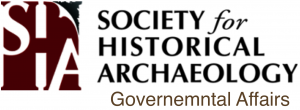 SHA Members’ Congressional Visits
SHA Members’ Congressional Visits
Thanks to those of you who participated in Cultural Heritage Partners’ July webinar, “Making Our Voices Heard During August Recess.” An even bigger thanks to members who followed through and visited with members of Congress and their staffers, as well as members of state and local government! If you met with, called or had contact with your Representative or Senator in August, please share your results with Cultural Heritage Partners’ so we can keep track of results and any needed follow-up.
Congress Update
Possible Shutdown?
As tonight’s September 30 end-of-fiscal-year approaches, the House and Senate continue their arguing over the budget and Obamacare. A short-term spending bill (a continuing resolution, or CR) has to pass by midnight to avoid a government shutdown. The shutdown would affect a broad range of services, including forcing a closure of national parks and museums. Seemingly desperate to reach an agreement, Senate Republicans today floated the idea of a 1-week stopgap measure, which their Democrat colleagues seemed unwilling to support. Should a shutdown happen, it is likely to go no more than a few days. The longest shutdown in history lasted 21 days, from December 16, 1995 through January 5, 1996.
A related issue looming on the horizon is the debt: Congress will have to vote to raise the ceiling in mid-October, when Treasury estimates the U.S. will hit the permissible limit.
Syria
Taking most of members’ time until recently was deciding whether to authorize action against Syria, in light of Assad’s use of chemical weapons. After seeing low public and Congressional support, President Obama asked the Senate not to vote on air strikes, and is instead pursuing a diplomatic solution with Russia.
Inside Syria, the war is having a serious adverse effect on archaeology. As the New York Times reported in April, “the country’s archaeological heritage is imperiled by war, facing threats ranging from outright destruction by bombs and bullets to opportunistic digging by treasure hunters who take advantage of the power vacuum to prowl the country with spades and shovels.”
NPS Kicks Off Centennial Website
To celebrate its 100th anniversary coming up in 2016, the National Park Service is inviting the submission of ideas through its “Next Century For Parks” website. Designed to be the home of the parks community, the public is asked to share ideas, successes and solutions for America’s national parks, today and for the next one hundred years, through the new website. NPS is looking for big, creative ideas that can become signature centennial programs. The deadline for consideration is October 20, 2013. You can check out the site here.
The Future of the Past: Using 3D Replicas for Public Archaeology
 For over a year now I have been working in the Virtual Curation Laboratory at Virginia Commonwealth University (VCU), and for over a year I have been consistently amazed by the rapidly growing interest in and use of three-dimensional technology in the field of archaeology. The Virtual Curation Laboratory (VCL), founded in 2011 and led by Dr. Bernard K. Means, began as a partner of the Department of Defense’s Legacy Program, with the goal of creating a virtual database of archaeological materials by recording them with a 3D scanner. The project has since grown, and we now have a large and diverse collection of digital models that have been created by Dr. Means and the many undergraduate student interns and volunteers who have participated and contributed to the project.
For over a year now I have been working in the Virtual Curation Laboratory at Virginia Commonwealth University (VCU), and for over a year I have been consistently amazed by the rapidly growing interest in and use of three-dimensional technology in the field of archaeology. The Virtual Curation Laboratory (VCL), founded in 2011 and led by Dr. Bernard K. Means, began as a partner of the Department of Defense’s Legacy Program, with the goal of creating a virtual database of archaeological materials by recording them with a 3D scanner. The project has since grown, and we now have a large and diverse collection of digital models that have been created by Dr. Means and the many undergraduate student interns and volunteers who have participated and contributed to the project.
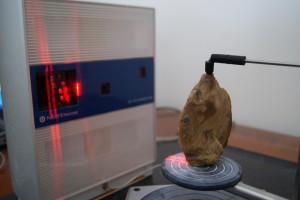
NextEngine 3D Scanner scans an Acheulean Handaxe from South Africa. Courtesy of the Virtual Curation Laboratory.
I began my involvement as an intern last summer, and very quickly began to appreciate the significance of the technology I was becoming familiar with. VCL employs a NextEngine 3D Desktop Scanner, which uses laser technology to create three-dimensional models of objects. The user can then process the model and finalize it in STL or OBJ formats, which can be shared via the internet or on a number of electronic devices such as smart phones and tablets. We also have a MakerBot Replicator 3D Printer, which can print plastic copies of the models we have created. There are countless ways that this technology could benefit archaeology, but as a student who was still fairly new to the field, I saw its greatest potential in education and public outreach.
My research last fall consisted of creating lesson plans that employed digital models and plastic replicas of artifacts to supplement the material that was being taught. We then took those lessons to a local high school and presented them to a group of history students there, taking note of how well or poorly they responded to our use of the models. We also presented a few different lessons to Dr. Means’ archaeological methods class at VCU, including one on basic lithic analysis using plastic replicas of projectile points that we have scanned. What we found was that the high school students responded especially well to the plastic replicas, as they offered a visible and tangible connection to the topic they were learning about. On the other hand, the VCU students unanimously agreed that they preferred the accuracy of the digital models. Those who participated in the lithic analysis lesson, however, were able to correctly identify the types of each point they were given based on the plastic replicas they studied, lending some credibility to the printed models as research tools. In March of this year I presented this research at my first conference, and it will soon be published in the upcoming issue of the Journal of Middle Atlantic Archaeology!
In addition to being a great tool for students who long for an interactive and readily available form of research material, we have found that 3D scanning and printing of archaeological materials is an incredibly effective tool in public archaeology. Not only do three-dimensional models and plastic replicas of artifacts help us to promote a better appreciation for archaeology and the materials we recover, but they offer the public a unique and tangible connection with the past that they may otherwise never experience. VCL does a great deal of public outreach through events and lectures, but my best examples of the value of these models are from this summer, when I was working as a field intern at Ferry Farm, George Washington’s Boyhood Home in Fredericksburg, Virginia.
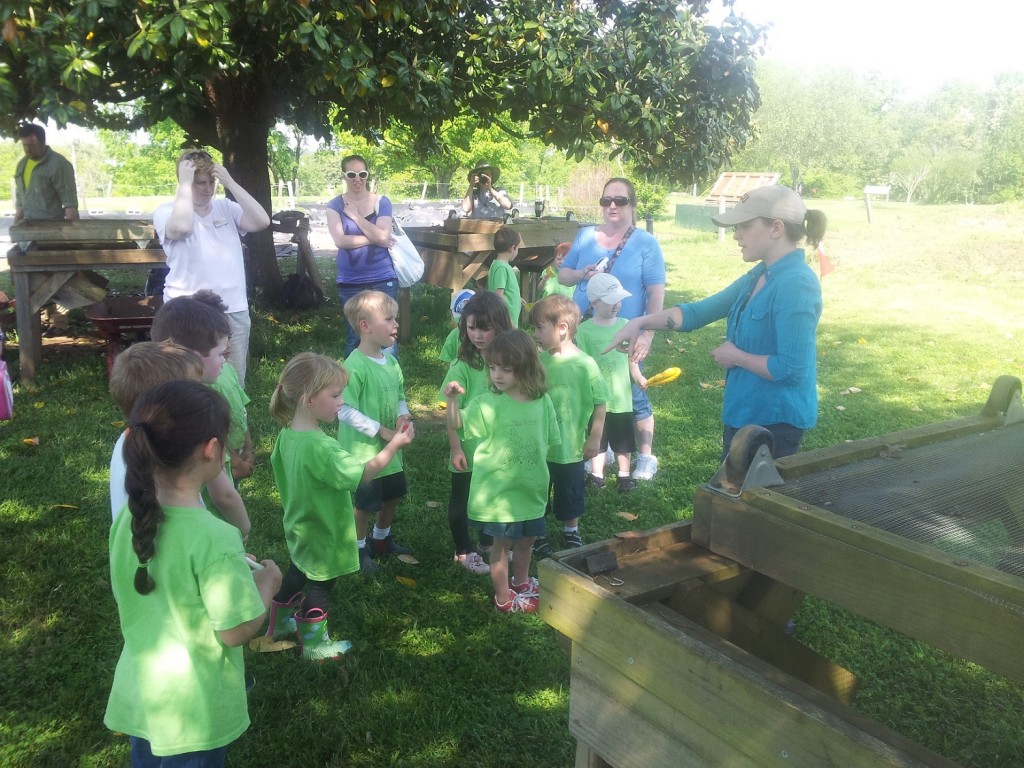
I pass around plastic artifact replicas and discuss the archaeology being done at Ferry Farm with a group of children. Courtesy of the Virtual Curation Laboratory.
Public Archaeology is a top priority at Ferry Farm, and as such we spend a lot of time discussing the site and its history with the many visitors who travel there. VCL has scanned and printed a great deal of artifacts from Ferry Farm’s collections, and a series of plastic replicas have been given to the archaeology staff to use for public program in the field. As I spoke to visitors during my time there, I found it incredibly helpful to use those replicas as examples of the types of artifacts we find at the site, and the visitors (especially the young ones) appreciated the fact that they could touch, feel, hold, and examine the replicas, as they would not have that opportunity with the real object.
The great diversity of artifacts that VCL has in its digital collection makes our efforts in public outreach and education even more effective. The Virtual Curation Laboratory staff has scanned lithic materials ranging from a one million year old Acheulean Handaxe from South Africa, to projectile points and other stone tools that have been loaned to us from collections across Virginia and Pennsylvania. We have scanned small finds from the homes of our nation’s greatest historical figures, including George Washington’s Mount Vernon, Thomas Jefferson’s Poplar Forest, and James Madison’s Montpelier. We have also been working on creating a database of faunal remains to help students, archaeologists, and other researchers identify and understand the skeletal framework of various animals.
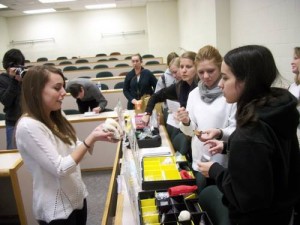
VCU student and VCL intern Mariana Zechini discusses 3D printing with a group of VAST members. Courtesy of the Virtual Archaeology Scanning Team.
More and more students have gotten involved with the Virtual Curation Laboratory over the past couple of years, and as a result we have created a student organization at VCU that focuses on the use of 3D technology in archaeology, and allows a greater number of students to pursue research relating to our project. The Virtual Archaeology Scanning Team (VAST) is now entering its second year as a student organization, and interest and participation have more than doubled since we began last August.
When I first became an intern in the lab last summer, few students – including myself – had any experience or knowledge about 3D technology, nor did we know if it would be an applicable skill in the future. Now, students from all backgrounds are entering our organization with specific research goals in mind, excited to have the opportunity to learn about and utilize our 3D scanner and printer. What has led to this sudden boom in interest, and how will this affect the next generation of archaeologists? Is virtual curation the future of the past?




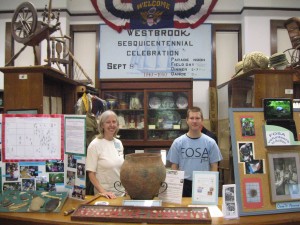
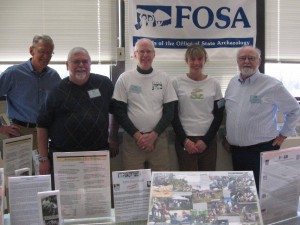
Pingback: WAC May 2012 eNewsletter – Volume 40 – World Archaeology Congress